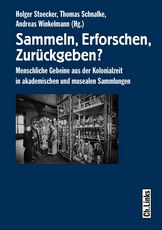One of Europe’s largest university clinics, the 300-year-old Charité in Berlin, Germany, has just returned 14 skulls of Aboriginal people to representatives of the Goemulgal, Lag Mabuyag and Wajarri Yamatji peoples.
Already in April last year the Charité returned skulls and other bones of 33 Aborigines and Torres Strait Islanders the Institution had received at the end of the 19th century. That was the first repatriation of its kind of ancestral remains from Germany.
The skulls were packed singly in boxes and during a handover ceremony stood in a lecture hall. The boxes were covered by various indigenous flags, reported a Berlin newspaper.
Representatives of the Australian government and ministries as well as the embassy attended the ceremony. The Aborigines took possession of the remains of their ancestors as “traditional owners”.
The skulls came to Berlin between 1882 and 1897, one of them from Western Australia. It is believed to have been dug up by a German engineer on an expedition and went to the Berlin university via the anatomist Wilhelm Krause. Krause frequently visited academics in Australia to grow his collection of skulls. The German researcher, Otto Finsch (1839-1917), dug up the other 13 skulls in northern Australia and kept them.
"At that time there was interest in skulls from all over the world to classify them,” explained Andreas Winkelmann, anatomy teaching coordinator and leader of a project to research the origins of the remains. He noted that researchers were especially interested in the Aboriginal skulls because it was thought that they were primitive and destined for extinction. To make statistical determinations they had needed many skulls.
The origins of the remains were determined from old documents and partly from writing on the bones. "It’s always like working out a puzzle to find out the precise location of the find,” said Winkelmann.
Nowadays the skulls are hardly relevant to research, said Winkelmann, they had been collected for purposes no longer pursued. Moreover, he noted, it was part of Aboriginal culture to be buried in one’s home soil. He said the Charité valued this wish higher than scientific interest.
Charité board chairman, Karl Max Einhäupl, stated at the ceremony: "It is an important obligation for the Charité to return to the traditional owners the human remains once collected supposedly in the name of scientific research and thereby to support the repatriation process.”
In 2008 the Charité became the first German scientific Institution to sign an agreement with Australia to hand over the remains.
So far human remains from anthropological collections were handed back to countries of origin five times. As well as Australia in 2013 and 2014 they went home to Namibia (2011 and 2014) and Paraguay (2012).
The Charité ranks with the biggest European university clinics. It has spawned more than half the German Nobel Prize winners. Doctors and other scientists research, heal and teach there at top international level.
For more on the repatriation of Aboriginal remains go here: http://www.creativespirits.info/aboriginalculture/people/aboriginal-rema...
The Charité possesses 7,000 skulls from various periods and regions. Its “Human Remains Project“ is to “collect reliable information about the origin and acquisition context of the collection pieces” and to process the “collection and collector history in its scientific and colonial historic contexts”.
Supported by the largely government-funded German Research Foundation a study is to examine the large anthropological skull and skeleton collections, some of which were made in colonial times. The Charité has worked on the history of its collections since 2010.
So far not enough was known about its own collections to respond even somewhat adequately to restitution demands, such as those made e.g. by Namibia in 2008, but also those from Australia and New Zealand still on the table. Thomas Schnalke, director of the Medical History Museum, said when presenting the project: “Science and research have accumulated guilt.“ He asked for forgiveness.

